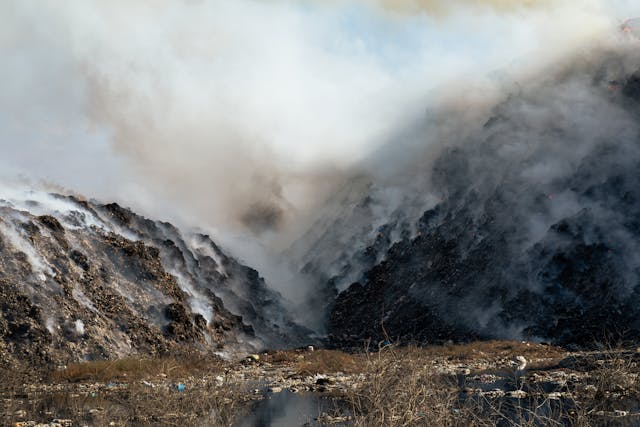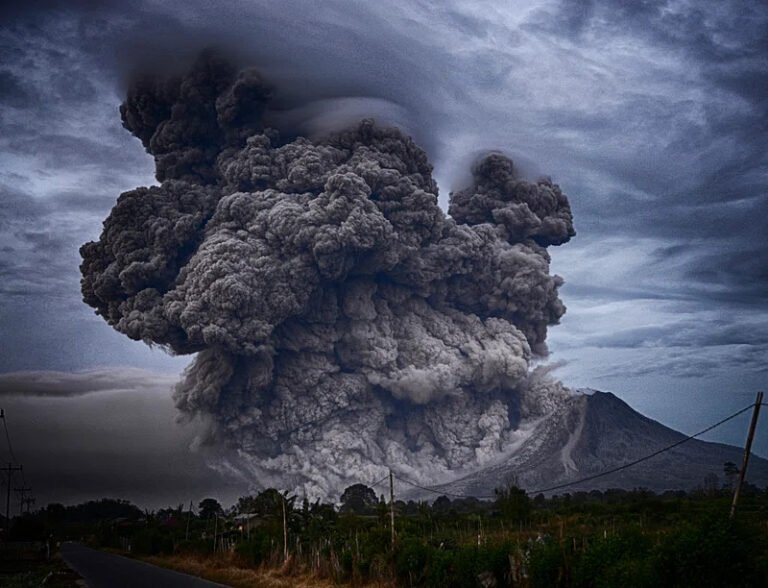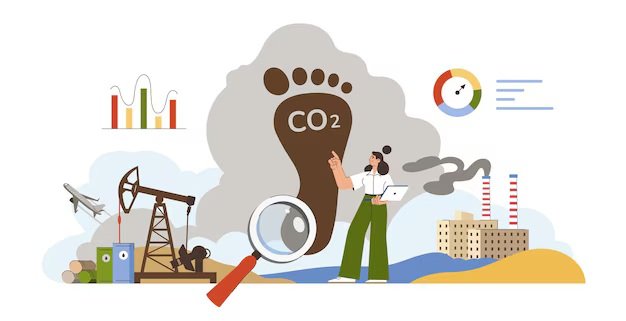Why Are Landfill Sites Bad for the Environment?
Picture this: rolling hills of lush greenery replaced by towering mounds of trash. The air, once crisp and fresh, now carries the heavy, sour stench of decay. Streams and rivers, lifelines for communities and ecosystems, turn murky and toxic. This isn’t a scene from a dystopian movie—it’s the harsh reality of landfill sites, the unintended monuments of our throwaway culture.
Globally, we generate an astonishing amount of waste. A 2024 International Finance Corporation report revealed that over 2 billion tons of waste were produced worldwide in a single year, and that number is on track to hit a staggering 3.4 billion tons by 2050. These figures aren’t just numbers; they represent a growing crisis with dire environmental, social, and economic consequences. Landfills release methane, a potent greenhouse gas that accelerates climate change. They leach harmful chemicals into the soil and water, endangering wildlife and human health. And they symbolise a systemic failure to address the root causes of waste.
This growing crisis demands urgent action. In the sections ahead, we’ll uncover the hidden costs of landfill sites, the shortcomings of current waste management practices, and sustainable solutions that can pave the way to a cleaner, healthier future. Let’s take this journey together.

In This Article
- What Is a Landfill?
- The Environmental Toll of Landfills
- Why Landfills Are Worse in Developing Countries
- The Human Health Implications of Landfills
- Sustainable Alternatives to Landfills
- Actionable Tips for Reducing Landfill Waste
- Conclusion
What Is a Landfill?
Think of a landfill as a giant trash bin built specifically to handle our waste. It’s not just a random hole in the ground—it’s a carefully designed system meant to keep garbage from harming the environment. According to the Environmental Protection Agency (EPA), modern landfills are engineered with protective layers, like clay or plastic liners, to stop harmful substances from leaking into the soil and water. They also have systems to collect liquid waste, known as leachate, and monitor the release of gases like methane. Despite these precautions, landfills still pose serious environmental challenges, like contributing to pollution and climate change.
Types of Landfills
- Controlled Dumps: Think of these as a step up from open dumps. While not perfect, they have some basic management measures in place, like controlled waste layering and occasional monitoring, to reduce their environmental impact.
- Sanitary Landfills: These are the gold standard of waste management. They come with layers of protection to stop chemicals from seeping into the groundwater, making them a safer option for waste disposal.
- Open Dumps: Unfortunately, these are common in many developing countries. Open dumps lack any proper structure, which means they easily pollute the environment and create health risks for nearby communities.

The Environmental Toll of Landfills
1. Greenhouse Gas Emissions: A Silent Climate Threat
When you think of climate change, your mind might jump to car exhaust or factory smokestacks. But would you believe landfills are major players in the game? Here’s how it works: when organic waste—like food scraps and yard clippings—breaks down without oxygen in a landfill (a process called anaerobic decomposition), it releases methane gas. Methane is a greenhouse gas that’s 84 times more potent than carbon dioxide over a 20-year period. That’s a staggering statistic, isn’t it?
Now, consider this: the U.S. alone has over 3,000 active landfills, and together they emit millions of metric tons of methane every year. It’s like a ticking time bomb for our atmosphere. Some landfills have systems in place to capture this gas and turn it into energy, which is a step in the right direction. But here’s the catch: globally, less than 35% of landfill methane is actually captured. That leaves the majority free to wreak havoc on our planet.
Take a moment to imagine this on a global scale. Picture countless landfills silently releasing methane, year after year. It’s no wonder scientists are sounding the alarm. Reducing organic waste through composting and supporting landfill gas recovery projects are small but meaningful ways we can all chip in to curb this invisible climate threat.
2. Leachate: Poisoning Soil and Water
Here’s another dirty little secret about landfills: leachate. What’s that, you ask? Leachate is the toxic, soupy liquid that forms when water trickles through waste in a landfill. This isn’t your average puddle. It’s a dangerous cocktail of harmful substances like ammonia, heavy metals, and volatile organic compounds (VOCs). If not managed properly, leachate can seep into the ground, poisoning soil and contaminating groundwater.
Let’s break it down further. Ammonia, which comes from decomposing organic waste, can harm aquatic ecosystems by triggering algal blooms. Heavy metals like lead and cadmium—often found in e-waste and batteries—can stick around in the soil for decades, making it toxic for plants, animals, and even us. VOCs from paints and solvents can evaporate into the air, contributing to air pollution and causing respiratory problems.
Here’s a quick look at the problem:
| Contaminant | Source | Environmental Impact |
|---|---|---|
| Ammonia | Organic waste | Aquatic toxicity, algal blooms |
| Heavy Metals (e.g., Lead) | E-waste, batteries | Soil and groundwater contamination |
| VOCs | Paints, solvents | Air pollution, respiratory health issues |
Leachate management is critical, yet it’s an uphill battle. Modern landfills have systems to collect and treat leachate, but older or poorly managed landfills often don’t. This is where individual choices make a difference. Properly disposing of hazardous materials like batteries and paints can help keep these toxins out of landfills in the first place.
3. Habitat Destruction and Biodiversity Loss
Finally, let’s talk about the physical footprint of landfills. These sprawling sites don’t just store waste—they consume vast areas of land. In the U.S., for example, the 3,000 active landfills collectively occupy over 1 million acres. That’s a lot of land that could have been forests, wetlands, or grasslands. Instead, it’s now covered in layers of trash.
Think about what this means for wildlife. Natural habitats are destroyed to make way for landfills, displacing countless animals and plants. The effects are especially severe in regions where biodiversity is already under threat. Take the Delhi landfill in India, for instance. Spanning 500 acres, it has not only displaced local wildlife but also polluted nearby water bodies, affecting both biodiversity and human health. Nearby communities often face increased health risks due to contaminated water and air, making this a human problem as much as an environmental one.
But it’s not all doom and gloom. Some landfills have been repurposed into parks or solar farms after they’ve been closed and capped. These projects show that it’s possible to reclaim these spaces for good. Still, the best way to protect habitats is to reduce the amount of waste we send to landfills in the first place. Recycling, composting, and mindful consumption can all play a role.
Learn More: Why Is Plastic Pollution Bad for the Environment? Understanding Its Impact and Solutions
Why Landfills Are Worse in Developing Countries
In many developing countries, the reality of waste management is a stark reminder of the challenges tied to rapid urbanisation and limited infrastructure. Did you know that around half of the global population doesn’t have access to proper waste collection services? (Statista, 2024). This statistic is more than just a number—it’s a window into the daily struggles of millions who live near open dumps and endure the consequences of poorly managed waste.
One major issue is the lack of funding for modern, well-engineered landfills. Governments in these countries often prioritise other pressing needs like healthcare and education, leaving waste management to fall through the cracks. Compounding this is the limited awareness about waste segregation—a critical step in reducing landfill dependency. Many people mix organic, recyclable, and hazardous waste together, making disposal more harmful and recycling far less effective.
Another challenge is the heavy reliance on informal recycling sectors. While these informal workers play a significant role in salvaging reusable materials, they often operate in unsafe conditions with little to no protective equipment. Their contributions, though crucial, come at a significant human cost.
During a visit to Lagos, Nigeria, I saw this issue up close at the Olusosun landfill—one of the largest dumpsites in Africa. The image of scavengers, including children, picking through heaps of hazardous waste for anything of value is something I’ll never forget. Seeing them working in such dangerous conditions, exposed to toxic fumes and sharp objects, was heartbreaking. It drove home the need for sustainable solutions. These communities deserve better, from safe working conditions to waste systems that don’t poison their environment.
Improving waste management in developing nations isn’t just about building better infrastructure. It’s about giving people the chance to live healthier lives, free from the hazards of unmanaged waste. It’s a challenge we can no longer afford to ignore.
The Human Health Implications of Landfills
Let’s take a moment to consider how landfills affect our health — something we often overlook in our busy lives. Did you know that the very air we breathe could be impacted by the waste we toss out? Landfills emit harmful gases like hydrogen sulfide, a compound that not only stinks but can also lead to headaches, nausea, and even long-term respiratory issues. Imagine living near one of these sites, constantly inhaling these toxins. In 2021, a study in Italy revealed a shocking fact: people living within just 5 kilometres of a landfill faced a 25% higher risk of developing respiratory illnesses. That’s a stark reminder of how deeply our environment intertwines with our health.
And it’s not just the air we need to worry about. The water around landfills can become contaminated with leachate — a toxic liquid that seeps through piles of waste. This polluted water often finds its way into local supplies, spreading diseases like cholera and dysentery, especially in places with open dumps and poor waste management. Think about it: a single plastic bag or bottle improperly discarded could eventually contribute to someone falling ill. Addressing landfill pollution isn’t just about protecting the planet; it’s about protecting each other.
Sustainable Alternatives to Landfills
1. Recycling and Upcycling
Recycling is one of the most straightforward ways to cut down on waste. It’s about giving materials like paper, plastic, and metal a second life instead of tossing them into the trash. Think of Germany, a country that’s turned recycling into an art. With a recycling rate of 67%, they’ve managed to conserve resources and save energy in impressive ways. If they can do it, why not us?
Upcycling takes recycling a step further. It’s about creativity—transforming old items into something better or more useful. An old ladder becomes a bookshelf, or worn-out jeans are stitched into a tote bag. By thinking outside the box, we can reduce landfill waste and add a touch of personality to our homes.
2. Composting
Organic waste—food scraps and yard clippings—makes up a large chunk of what ends up in landfills. But it doesn’t have to be that way. Composting turns this waste into nutrient-rich soil that helps plants thrive. Take San Francisco as an example. Their city-wide composting program has diverted over 1.5 million tons of organic waste from landfills since 1996. What’s more, they’ve managed to cut methane emissions by half. If you’ve got a garden, composting is a win-win: good for the planet and great for your plants.
3. Waste-to-Energy (WTE) Systems
Here’s a clever idea: turning waste into energy. Waste-to-energy (WTE) systems capture methane from landfills and convert it into electricity or heat. It’s like getting two benefits from one solution—less methane and more renewable energy. Sweden has mastered this, with 50% of its waste going through WTE plants. Imagine powering homes while reducing harmful emissions. It’s a win for everyone.
Actionable Tips for Reducing Landfill Waste
1. Adopt a Zero-Waste Lifestyle
This might sound ambitious, but embracing a zero-waste lifestyle is more manageable than you might think. Start with simple swaps like using reusable bags, water bottles, and containers. These small changes eliminate the need for single-use plastics, which are a major contributor to landfill waste. Imagine this: every reusable bottle you carry means one less plastic bottle discarded. Over time, these habits not only reduce waste but also save money.
2. Segregate Waste at Source
Segregation is key. Keep separate bins for recyclables, compostables, and hazardous waste. When waste is properly sorted, it’s easier to recycle and compost effectively. For example, leftover food scraps can turn into nutrient-rich compost for your garden instead of contributing to landfill methane emissions. If you’ve ever tried composting, you’ll know it’s incredibly satisfying to see kitchen waste transform into something useful.
3. Support Local Recycling Programs
Engage with your community’s recycling initiatives. Many towns and cities offer programs to help residents recycle correctly. You could participate in community clean-up drives or even organise one yourself. Waste audits—where you analyse the trash you generate—can be eye-opening. They help identify what’s ending up in the garbage and how to reduce it.
4. Advocate for Policy Changes
Don’t underestimate the power of your voice. Support policies that enforce better landfill management and incentivise recycling efforts. Write to local officials, sign petitions, or join environmental advocacy groups. Real, systemic change often begins with collective action.
Learn More: 20 Examples of Biodegradable and Non-Biodegradable Waste
Conclusion
Landfills symbolise the unintended consequences of our consumption-driven lifestyles. While modern engineering has reduced some of their environmental impacts, landfills remain far from sustainable. By embracing recycling, composting, and waste-to-energy solutions, we can significantly reduce our reliance on landfills.
Ultimately, solving the landfill crisis requires collective action—from governments enforcing stricter waste management policies to individuals adopting zero-waste practices. Together, we can transform our wasteful habits into sustainable ones, leaving a cleaner, healthier planet for future generations.







